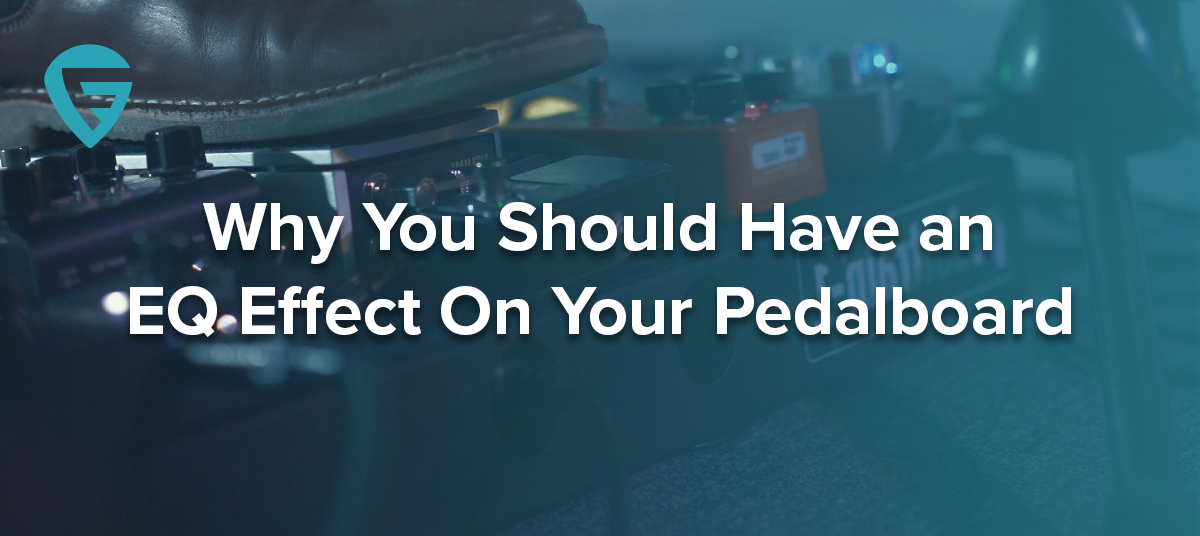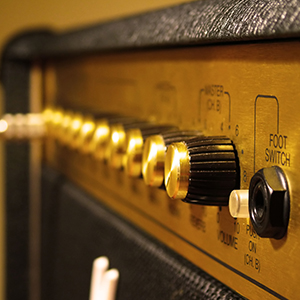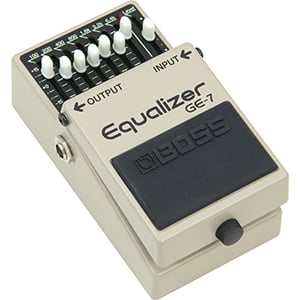- Home
- Instruments
- Gear
- Recording
- Lessons
- Reviews
- Blog

For the most part, your average guitar effect pedalboard is going to be full with a whole array of modulation, distortion, and temporal effect pedals. That's what most average guitar players are used to seeing. However, when it comes the time to step things up a notch, you need to introduce some serious tools that will get the job done. A good portion of the community doesn't consider EQ pedals to be an effect, and they would be correct.
These little force multipliers are more of a tool than an effect, but the fact that they share the same format as most effects pedals is the reason why they end up lumped together in the same category. So, what are EQ pedals for? Well, to answer this question we need to go deeper into the subject of tone, and how your standard signal chain works. By the time we're done, you will learn that EQ pedals are among the most essential effect pedals you can have in your setup.
 Guitars and amps come in all kinds of shapes, forms, and configurations. Since this also applies to their electronics and other features, it's only fair to conclude that different combinations of amps and guitars will give you different results in terms of tone. What happens if you are not satisfied with the tone you get when you plug everything in and flip that switch? There are several options on the table.
Guitars and amps come in all kinds of shapes, forms, and configurations. Since this also applies to their electronics and other features, it's only fair to conclude that different combinations of amps and guitars will give you different results in terms of tone. What happens if you are not satisfied with the tone you get when you plug everything in and flip that switch? There are several options on the table.
You can try to dial in a more precise tone using your guitar's controls, such as tone knobs and pickup select switches, or you can turn to the amp's on-board three-band EQ. This definitely works for some people, but there's a lot of those guitar players out there who just can’t get what they want using these readily available features.
 Once you reach that point, one of the last remaining options you have, and the best one for that matter, is the EQ pedal. An EQ pedal gives you the ability to change the nature of your tone by increasing certain frequency bands or reducing others. Every pedal of this type will offer some amount of boost, just like a boost pedal does, only this time it's divided those frequency bands. In practical terms, let's say you feel like there's not enough low-end response in your guitar's tone. You just place the EQ pedal in your signal chain and add whatever amount of boost you deem appropriate to those bands which affect the bass.
Once you reach that point, one of the last remaining options you have, and the best one for that matter, is the EQ pedal. An EQ pedal gives you the ability to change the nature of your tone by increasing certain frequency bands or reducing others. Every pedal of this type will offer some amount of boost, just like a boost pedal does, only this time it's divided those frequency bands. In practical terms, let's say you feel like there's not enough low-end response in your guitar's tone. You just place the EQ pedal in your signal chain and add whatever amount of boost you deem appropriate to those bands which affect the bass.
On a similar note, maybe you want to scoop those mids, but you don't want to alter your amp's current preset. All you have to do is make necessary adjustments to your mid-range frequencies using an EQ pedal and step on it to apply that tone profile. Once you really get deep into forming a tone that meets even the most subtle requirements you have, a good EQ pedal is an absolute must-have piece of equipment.
![]() Just like most products related to a well developed and saturated market, there are basic EQ pedals with more robust capabilities and then there are complex designs which take control to completely different level. For the most part, even the very basic EQ pedal is going to give you that standard three band EQ with Treble, Mid and Bass controls.
Just like most products related to a well developed and saturated market, there are basic EQ pedals with more robust capabilities and then there are complex designs which take control to completely different level. For the most part, even the very basic EQ pedal is going to give you that standard three band EQ with Treble, Mid and Bass controls.
More advanced options, which are usually what people go for, offer a lot more options and features. To start with, you get a more detailed frequency band division, which allows you to be pretty precise when choosing what to cut or boost. If you'd like to know more about proper use of EQ pedals, check out our article that deals with that topic in particular. ‘How To Get The Most Out Of Your EQ Pedal'
On top of that, you can also get a pure boost that multiplies the EQ boost, or even the ability to save different EQ presets. On the topic of that additional boost we've mentioned just now, EQ pedals are sometimes used to compensate for gain loss that occurs in complex signal chains. Once you link a certain number of effects pedals, the signal gets weaker and weaker. This results in a lower strength signal reaching the amp, thus producing a somewhat fainter sound. Add an EQ pedal somewhere in there, and you can compensate for this and then some.
EQ pedals shouldn't be viewed as pure effects pedals that you might want to use occasionally. Instead, you should look at them as a core part of your setup. Sometimes they are a helpful tool, but sometimes they are a necessity that you just have to get. The whole confusion about EQ pedals mostly comes from newer guitar players who haven't yet reached that stage where they are thinking about shaping the tone of their guitar on a more advanced level. Sure, you can do a lot using just what the amp has to offer, in a grand scheme of things, those controls are insufficient.
One cool thing about EQ pedals is that they come at all price points. This is one piece of equipment you definitely don't have to spend a fortune on. Expensive models will get you more features and a bit more integrity, but even the cheap ones will get the job done just fine, granted that you know how to work them. As we have mentioned before, learning the proper use of an EQ is not that hard when it comes to learning what different controls do, but it takes some finesse to dial in that perfect tone.

Reader Interactions